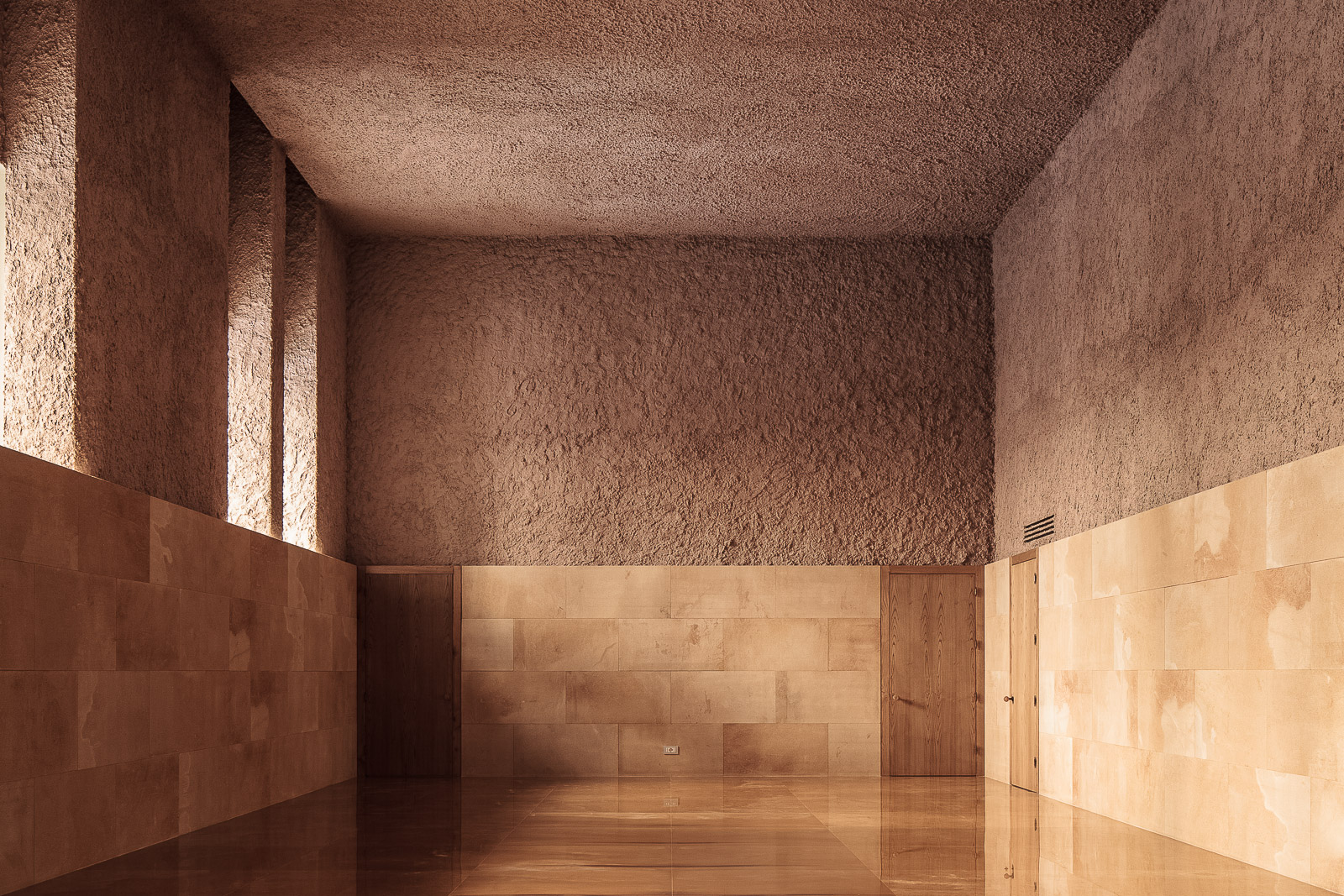Review
Mariza D’Anna
Architect Cardillo: ‘From an anonymous space to a place where the city rediscovers its sacred dimension’.
In a narrow street cutting through the crescent shape of the city lies a singular piece of recently completed architecture, named Specus Corallii. This space, known as the Sala Laurentina, is an annexe of the Cathedral of San Lorenzo. It was an ancient oratory destroyed in the Second World War and rebuilt without a soul. Abandoned for over twenty years, it had served as a meeting place for the clergy and also as a space to set up a large nativity scene. It was the idea of Architect Antonino Cardillo to transform this anonymous space into a place where ‘the city regains its sacral dimension that binds those who were to those who are’.
The 42-year-old professional from Trapani has recently returned from Rome, a city he had chosen as his home after distancing himself from Sicily and its age-old difficulties. In 2009, he was selected by the architecture and design magazine Wallpaper*—among profiles from around the world—as one of the thirty best architectural promises. However, the path he chose to carve out a space in the jungle of the profession is singular. ‘When I arrived in Rome—he says—I had no contacts, so I started working with my imagination, creating imaginary houses’. A stroke of genius that the German press thought to unmask by visiting him in his small house above Trastevere after the magazine H.O.M.E. had published a substantial article on one of his magnificent works: dream houses, in Rome and other places around the world, projects without clients but with a precise idea: places imagined by Antonino Cardillo whose designs were published in specialised magazines worldwide. ‘This idea of mine, appreciated by many, has also created controversy—says the architect, reserved but determined behind his green eyes and melancholy gaze—it was a way to make myself known, a breakaway thought to enter a complex world’. He actually realises—for real—the Nomura House in Japan (2010), the Sergio Rossi boutique in Milan (2010), other works in London, and the House of Dust in Rome (2013), which became his aesthetic manifesto and was chosen by curator Beppe Finessi as one of the fifty works that tell the story of interior architecture in Italy at the XXI Triennale di Milano. Cardillo also boasts presentations in Rotterdam (Chabot Museum), Frankfurt (Deutsche Arckitekturmuseum), and London (John Foxx Exhibition, Chelsea College of Art, Victoria & Albert Museum).
Entering the Specus Corallii, he warns me of the ‘author’s ironic twist’ and his intention to create ‘a literary narrative where it is not so important that things really happened, and what matters is to develop an idea and maintain it’. But the times are long gone when, in Rome, without money, he invented other trades, even writing theses to support himself. The amazement, upon entering the hall, is seeing how he managed to reconcile a sacred place with the city’s tradition. The light and allegories are functional to the geometric and schematic space, a rectangle ‘available for different uses and interpretations—says the architect Cardillo—divided between land and sea like the city’. With an aqua green floor, a lateral corridor of telescopic arches—according to a Borrominian concept—creates unusual convergences. A light—coming from an oculus placed at the end—filters discreetly, reflects on the floor, retrieves different forms, building the structure at the entrance. At the back, a niche like a mihrab: ‘in the idea of architecture as a sacred and universal dimension’.
In the oratory, the space is played on materials and colours. The shells and corals are evoked by the coverings: the pozzolana, which descends from the roof to the walls and which, mixed with a colour tending towards coral, recalls Trapani’s art; and the mature ochre of the calcarenite that confronts the dark brown that encloses the fossilised trunk of a tree. While the measurements of the rectangle, in plan, recall the dimension of the stylobate of Temple E in Selinunte.

Antonino Cardillo, Specus Corallii, Sala Laurentina, Cathedral of Trapani, 2016. Photography: Antonino Cardillo